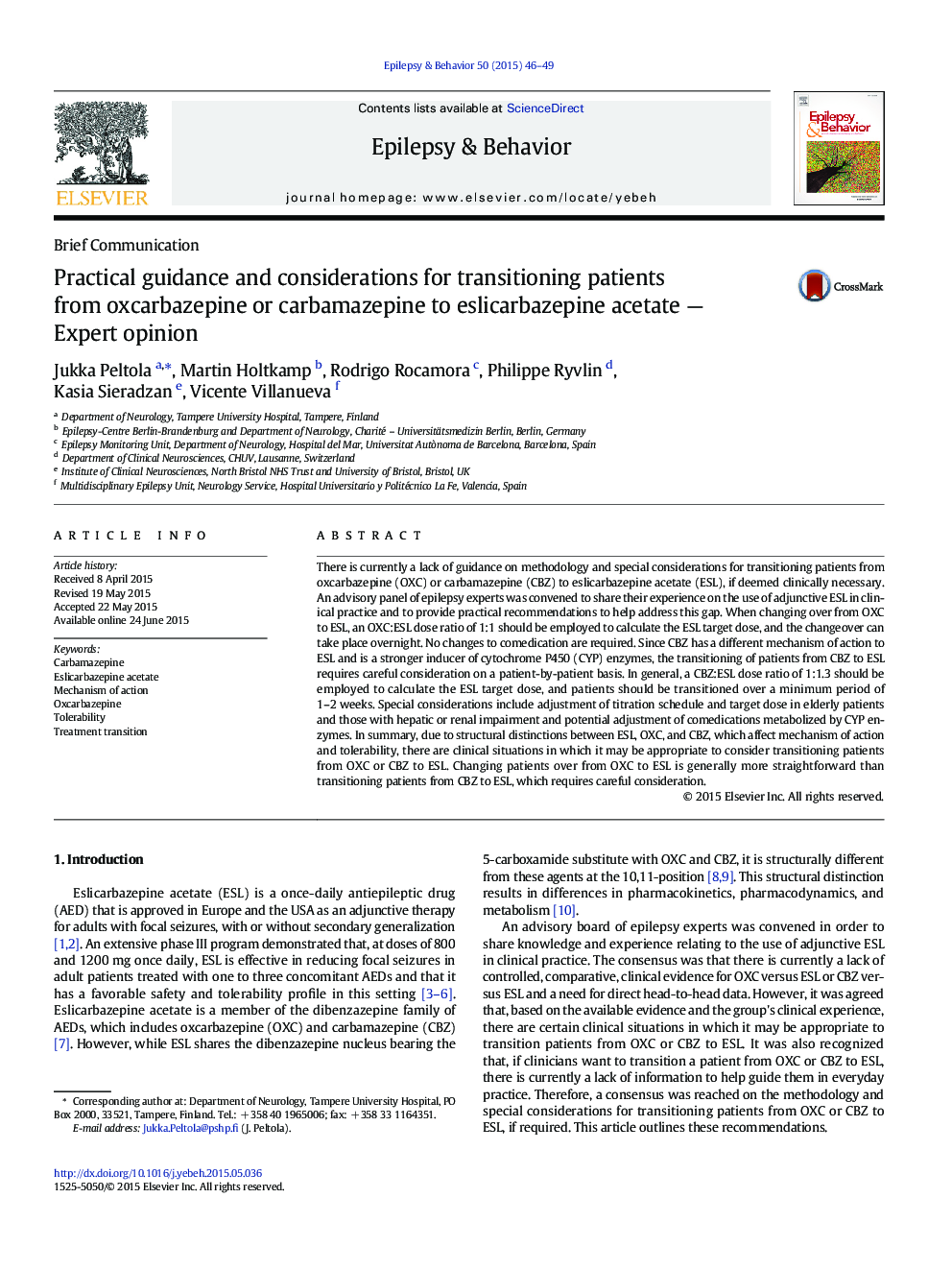| Article ID | Journal | Published Year | Pages | File Type |
|---|---|---|---|---|
| 6010838 | Epilepsy & Behavior | 2015 | 4 Pages |
There is currently a lack of guidance on methodology and special considerations for transitioning patients from oxcarbazepine (OXC) or carbamazepine (CBZ) to eslicarbazepine acetate (ESL), if deemed clinically necessary. An advisory panel of epilepsy experts was convened to share their experience on the use of adjunctive ESL in clinical practice and to provide practical recommendations to help address this gap. When changing over from OXC to ESL, an OXC:ESL dose ratio of 1:1 should be employed to calculate the ESL target dose, and the changeover can take place overnight. No changes to comedication are required. Since CBZ has a different mechanism of action to ESL and is a stronger inducer of cytochrome P450 (CYP) enzymes, the transitioning of patients from CBZ to ESL requires careful consideration on a patient-by-patient basis. In general, a CBZ:ESL dose ratio of 1:1.3 should be employed to calculate the ESL target dose, and patients should be transitioned over a minimum period of 1-2Â weeks. Special considerations include adjustment of titration schedule and target dose in elderly patients and those with hepatic or renal impairment and potential adjustment of comedications metabolized by CYP enzymes. In summary, due to structural distinctions between ESL, OXC, and CBZ, which affect mechanism of action and tolerability, there are clinical situations in which it may be appropriate to consider transitioning patients from OXC or CBZ to ESL. Changing patients over from OXC to ESL is generally more straightforward than transitioning patients from CBZ to ESL, which requires careful consideration.
